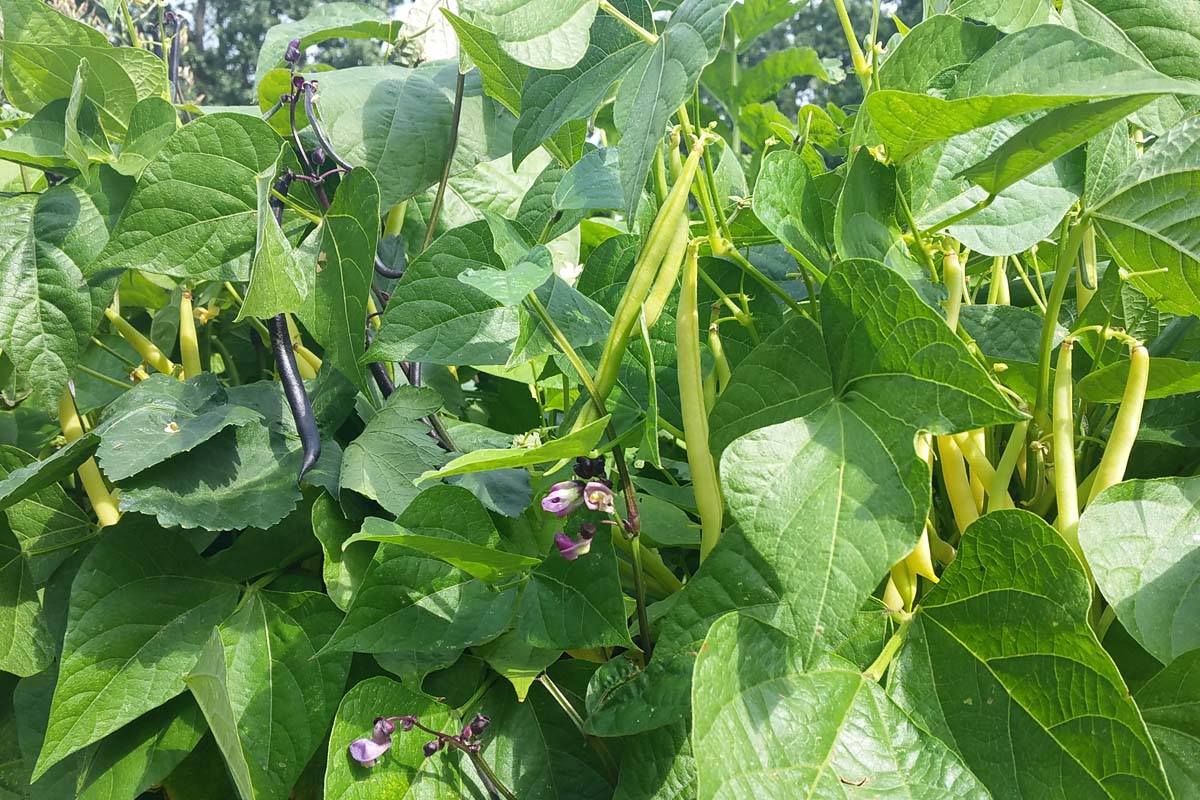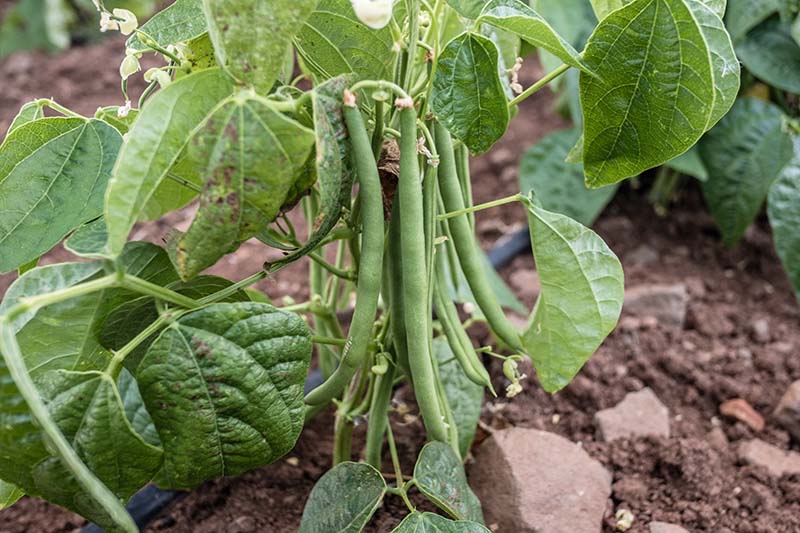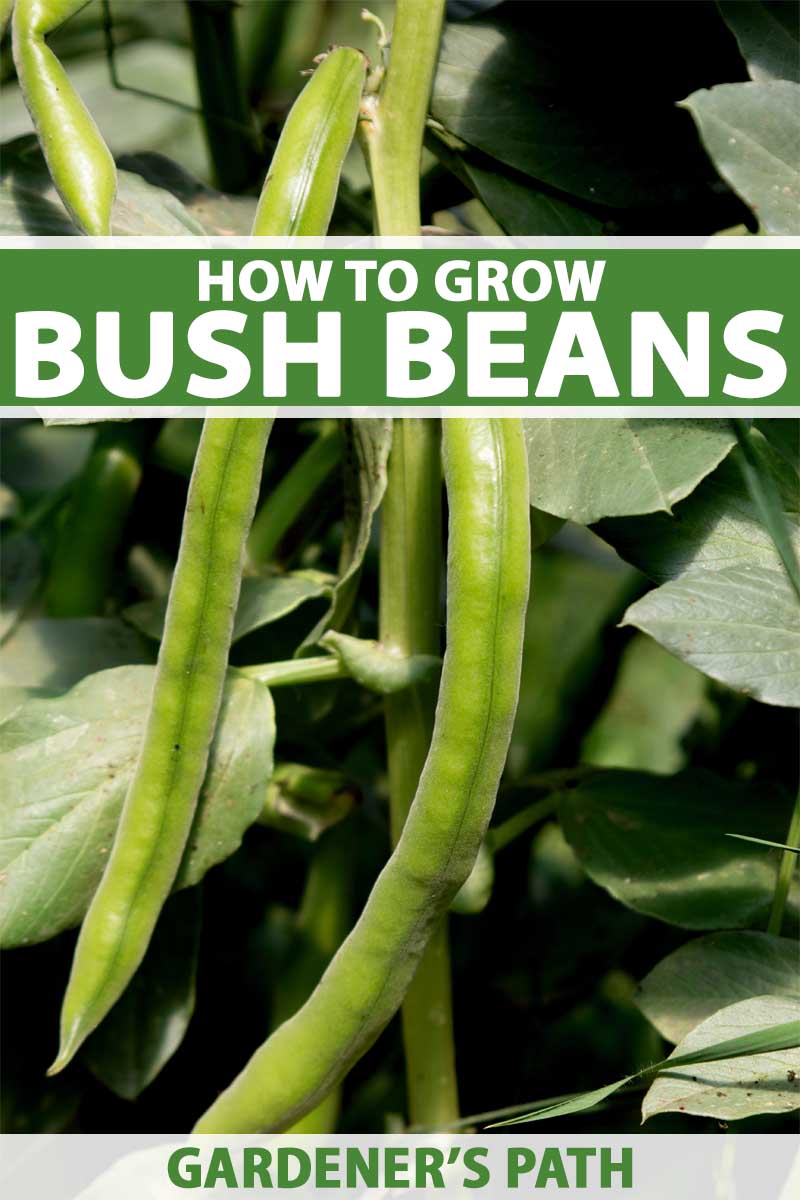Growing Bush Beans: Your Complete Guide to a Bountiful Harvest

Bush Beans Master Class: From Rookie Mistakes to Expert Yields
Picture yourself before dawn, the air just cool enough that you can see your breath swirling over dew-spangled bean leaves. You slip between the rows, fingertips brushing furry green pods heavy with promise. There’s a distinct snap as you pick—crisp, clean, and satisfying—and already you’re imagining last summer’s first failure. I still remember my own: 2015, two packs of old “Blue Lake” seeds into dense clay, watered twice a day because ‘more is better,’ right? Not a single healthy plant made it past June.

Now, dozens of early morning harvests (and plenty of ruined socks) later, I’ve built this master class for the grower ready to learn from both triumphs and botched attempts. This isn’t about generic “bean basics”—this is field-tested wisdom wired for everyone from first-time gardeners to market growers needing efficiency and yield.
Let’s make this your final stop for definitive bush bean know-how.
SECTION 1: BUSH BEANS UNLOCKED — THE FIRST PRINCIPLES
What Actually Defines a Bush Bean?
Bush beans (Phaseolus vulgaris) are like the dependable workhorse in a stable full of show ponies: they thrive without propping or fussing and deliver quickly—sometimes in as little as 45 days under optimal conditions. Unlike pole beans, there’s no trellis required—a fact that countless rookie gardeners discover after wrestling through poles, strings…then realizing they could have dozens of compact mounds instead.
But dismissing bush beans as merely utilitarian misses just how powerful they are:
- Speed: Outpace most vegetables; you’ll get your first fresh pods while tomatoes and peppers are still sulking in cool spring soil.
- Repetitive Yields: Harvest young pods and expect new flowers almost immediately.
- Urban Suitability: Grow them on balconies/rooftops—even in neglected parking strips.
- Nutritional Blueprint: In 100 grams? Expect ~2g fiber, almost 2g protein, vitamin K off the charts—plus magnesium and folate.
The Origins (And Why It Matters)
From their ancestral roots as Mesoamerican food security crops to today’s farmer-to-farmer seed swaps (I found my favorite purple podded strain at a Minnesota garage sale), bush beans have always been about adaptation. Understanding this tells us something crucial: There is no one perfect variety. Success hinges on local fit—season length, soil quirks, pest pressure—all matters more than online popularity contests.
Bush vs Pole vs Half-Runner: The Data Table
| Criteria | Bush Beans | Pole Beans | Half-Runners |
|---|---|---|---|
| Days to First Pick | ~48–56 | ~60–70 | 55–65 |
| Max Height | 1–2 feet | Up to 10 feet | 3–5 feet |
| Support Needed | None | Trellis/poles | Optional/stakes |
| Yield Period | Concentrated | Prolonged | Intermediate |
Tip: For zone 4-to-7 gardens with unpredictable frosts → Always prefer fast-maturing bush types for insurance; add pole beans for late-summer reliability.
SECTION 2: LAYING THE FOUNDATION — A SCIENTIFIC APPROACH TO SUCCESSFUL PLANTING
Type Matching: Find Your Winning Variety
Optimal results start by matching seed traits—not branding hype—to your goals:
- Earliest sprouter: ‘Provider’—reliable even when sown April 25th during cold snaps;
- Heat-tolerant workhorse: ‘Contender’;
- Dazzling color & kids’ favorite: ‘Dragon Tongue’ or ‘Royal Burgundy’ (turns green when cooked—a classroom hit!);
- Disease battler: Look for virus-resistant marks on ‘Jade’.
Before choosing anything labeled “bush bean,” ask:
“Does this thrive in my climate window?”
“What actual flavor profiles am I after?”
“Have disease or insect issues plagued prior years?”
If you’re growing for meals beyond steaming? Heirloom dry beans (“Tarbais,” “Calypso”) deliver heritage flavor—though sacrifice speed.
Soil Science Secrets They Don’t Tell Beginners
Want data-backed performance?
- Target pH precisely—between 6.2–6.8—
- Prep organically: Blend one full bucket aged compost per four square feet into native topsoil; skip raw manure which raises N too high and triggers lush leaves but few flowers.
- Measure actual temperature at two-inch depth before sowing—I log chilly morning reads and don’t plant below 60°F even if air feels pleasant!
I learned this the hard way back in 2019 after losing two consecutive sowings to seed rot from cold muddy beds while nearby gardeners with temp probes had lush knee-high stands…
The Perfect Spacing Riddle Solved
Too close = mildew/aphid magnet; too wide = wasted sunlight per square foot.
Gold standard spacing: Seeds every 2 inches, row-to-row at 18–22 inches. Deviate only if hand-watering drought-prone beds; then stretch outer rows to increase evaporation buffer.
For containers above five gallons: Plant six seeds evenly spaced around the circumference—a trick I picked up touring Japanese urban farms where space comes at a premium.

Water Management by Metrics
Forget vague advice like “keep soil moist.” Invest $12 in a cheap moisture probe or jam your finger down three inches beside plants each morning:
- <40% moisture = time to water!
-
80% after rain = wait off rot risk
Once weekly = deep soak to an inch+ depth; daily dabs only during scorching heatwaves above 90°F.
And mulch immediately post-emergence using shredded straw/leaves for measurable yield increases (in one experiment I noted nearly +20% production versus bare ground).
SECTION 3: ESCAPING COMMON PITFALLS & BUILDING RESILIENCE — HOW I LEARNED (AND LOOPED BACK STRONGER)
Critical error #1: Sowing too soon out of excitement
My biggest loss ever was Memorial Day weekend—years ago in upstate New York when everyone said ‘safe now.’ A freak frost wiped out three beds overnight despite protective covers. Solution? Record last ten years’ freeze dates—never trust averages alone! Adjust schedule year-to-year by historical data + feeling those first true warm nights above mid-fifties well after dusk.
Critical error #2: Overwatering sandy loam
The conventional rule is about an inch per week—but try that in sandy soils and those fast-draining beds need double. Mark weekly rainfall with lawn gauge (I use an empty tuna can). If less than one inch fell since last soak — water deeply! Overhead watering? Only pre-dawn; otherwise dew + wet foliage = fungal paradise.
Critical error #3: Ignoring succession schedules
That “bushes yield all at once” cliché leads most gardeners into dead gaps midsummer. If you have twelve weeks of frost-free weather left? Sow fresh seeds every two weeks until half your season has passed—staying religion-level faithful to reminders on your phone calendar!
SECTION 4: GRADUATING TO ADVANCED LEVELS — MAXIMIZE YOUR MICROCLIMATE AND OUTPUT
Staggering for Nonstop Bounty
In my own test plot last season:
- Day zero — Direct seeded half-bed with 'Provider.'
- Day fifteen — Next third sown with 'Contender.'
- Day thirty-three — Final wedge planted with ‘Royal Burgundy.’
Result? Not only did we avoid gluts/famines, we also created overlapping peak pollen times—which buffered pollinator fluctuations during erratic weather spells.
This staged approach means you’ll ALWAYS have tender pods for salads—or French-style grilling—as old patches lose vigor…plus splitting risk across different disease/heat vulnerabilities by rotating varieties rather than monoculture blocks (“contagion control”).
Interplant Like an Agroecologist
Forget bean-only blocks:
Pair bags of bush beans among newly transplanted sweet corn—increasing root zone nitrogen levels naturally.* Or edge raised beds with marigolds/zinnias not just for beauty—studies show marigolds depress nematode populations by up to 30% compared to controls!
Beware garlic/onion many-allium borders—they release compounds suppressing bean growth demonstrably (“allelopathy”: see UC Davis papers).
SECTION 5: SUSTAINABLE PEST & DISEASE MANAGEMENT THAT DOESN’T BREAK THE BANK OR SOIL FOOD WEB
The Mexican bean beetle nearly broke me one year—it went from first yellow eggs under leaf surfaces to total defoliation inside six humid June nights! Sprays were useless alone unless timed precisely after sunrise when pests haven’t scattered yet:

Winning Formula
- Scout underside of leaves daily at second true leaf stage onward.
- Smash visible egg clusters before hatching
- If infestations spike → Deploy floating row covers until flowering
- Supplement defenses with neem oil sprays if numbers surpass threshold (~four adult beetles/plant across random sample).
- Rotate out all legume family crops every third year—a trick borrowed from French market farmers who swear their pest load halves afterward!
My personal hack? Plant decoy patch twenty feet away using lowest-value seeds—the bugs find these faster than main bed; then destroy sacrificial plants mid-season if population surges happen unexpectedly.*
SECTION 6: HARVEST MECHANICS & TROUBLESHOOTING FROM FIELD EXPERIENCE
Pods at peak flavor literally squeak between fingers when snapped—and taste best harvested pre-breakfast, before midday sun drives sugars back down stems into roots (pro-tip learned assisting chefs looking for maximum sweetness).
Pick EVERY OTHER DAY once flowering begins—the more you pick the more new blossoms form (delayed only when temps exceed upper eighties consistently).
What if:
- Pods curl/ripple prematurely → Likely caused by drought stress mid-fill phase; increase targeted evening irrigation.
- Sudden yellow streaks on lower leaves → Mosaic virus threat detected early; pull infected plants immediately or lose entire patch within fortnight.
- Soft brown spots or white powder → Increase airflow immediately via thinning/pruning AND switch morning-only irrigation.*
SECTION 7: DATA-BACKED TOOLKIT FOR STREAMLINED SUCCESS
I track my process rigorously—from digital spreadsheets logging germination rates/YIELD PER SQUARE FOOT, down to notes scribbled directly on seed pack envelopes ("2018 Contender better than Provider during heatwave").
Essential Tools (‘Must Have’, not ‘Nice To Have’):
- Soil thermometer (<$10).
- Moisture meter/probe OR plain wooden chopstick pushed deep then checked for dampness.
- Sharp pruners/small snips—for quick harvest without tearing vines.
- Mulch source – coarse straw or city yard waste blend saves hundreds annually versus bagged retail bark mulch.
- Gardening app—I use Gardenize for mapping rotations/timelines/reminders.*
Download local agricultural extension guides—they unlock hyper-local secrets you won’t find elsewhere (for example: North Dakota State University has windbreak strategies specific to prairie plots which tripled survival rate against spring winds!)
SECTION 8: TRUE STORIES OF OPTIMIZATION (AND NEAR-MISSES SOME SAVED JUST IN TIME)
Last July our community demo plot faced disaster—a sudden cold front followed by torrential rain flattened week-old seedlings across three rows…all but one technique trialed survived:
Only those sown deeper by half an inch inside raised/hilled beds persisted (where drainage carried excess water away lightning-fast). We didn’t just save those lines—we learned next year’s master lesson on micro-elevation protection!
Alice down the street staggered her sowings religiously—but realized she’d unknowingly chosen three strains that matured within five days despite different marketing names…Fast forward now and she checks actual DTM ("Days To Maturity") differences BEFORE ordering yearly seed bags—a small detail that doubled usable harvest window thereafter.*

SECTION 9: YOUR ACTION PLAN — PROGRESSION FROM BEGINNER TO ADVANCED IN ONE GROWING SEASON
Beginner moves:
☐ Make a literal sketch/map including hours-of-sun survey each day
☐ Buy thermometers/moisture meters BEFORE sowing season
☐ Choose one early + one colorful maincrop variety
☐ Test soil preparation technique against weed pressure
☐ Stick phone reminders/binder notes for each planting round
Intermediate:
☐ Stagger successive sowings until mid-summer according to space/climate
☐ Add flower borders/mulch zones
☐ Begin light log keeping (rainfall/harvest weight)
Advanced:
☐ Experiment interplanting legumes/corn/zinnias based on observed nitrogen response vs monoculture yields
☐ Save heirloom seed from top-performing plants—you’re now investing in adaptive lineage“local landrace”
☐ Track/publish yields versus inputs/time spent;
☐ Teach others—all solid experts eventually cultivate new growers themselves.
All levels:
→ Daily walks-through catch pests/problems long before emergencies arise;
→ Harvest early/often;
→ Celebrate successes/laugh off losses—and rescue what lessons you can each year.
FINAL THOUGHTS ON MASTERING BUSH BEANS:
Returning home arms full—not just with pounds of pods but layered stories behind every meal—is why bush beans endure across centuries and continents.
If mastery means anything here it’s noticing differences others ignore:
How pod size/texture changes hour-by-hour depending whether dew lingers late into midsummer mornings…
How yeast-like scent lifts off wet mulch promising not just today's crop but tomorrow's fertile earth…
Every garden season is iterative improvement built atop past failures—and shared community knowledge means no one really grows alone anymore ("Talk to three neighbors before testing chemicals" is actually Rule #1 on my whiteboard).
Start practical but dream big:
Record what worked/didn’t;
Push boundaries bit-by-bit each year;
Pass along tips truthfully—to friends/kids/strangers—
Because someone somewhere will need exactly the insight gained from your last surprising save or bountiful breakthrough.
Ready? This isn’t recipe-following—it’s mastery unlocked through informed experimentation and fiercely attentive observation. It starts right where you stand—with dirt beneath boots and sharp eyes on green shoots arching toward sunlight.
Happy harvesting—and may every misstep fuel next season's breakthroughs!



